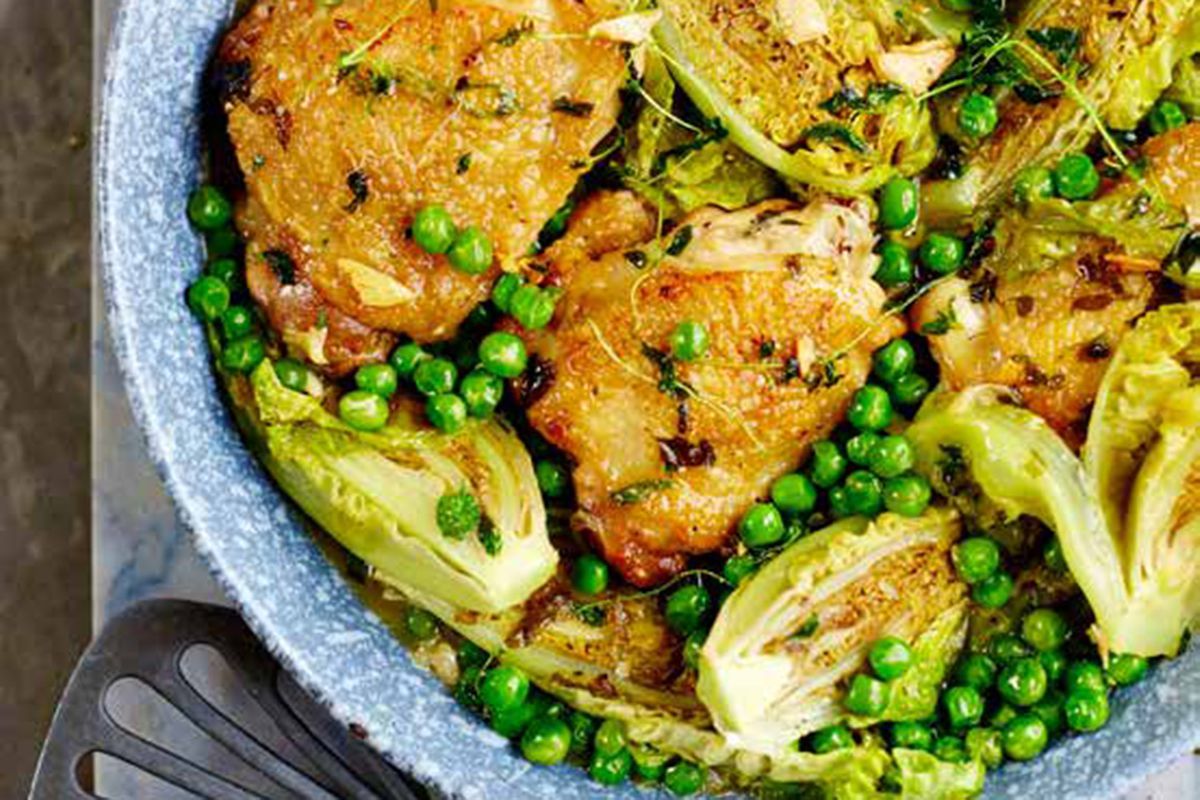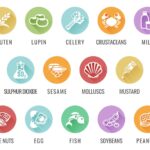Imagine a vibrant spring table overflowing with dishes bursting with color and flavor, yet completely free of common allergens. This isn’t a dream; it’s a delicious reality achievable with our collection of spring-inspired recipes. From vibrant vegetable showcases to refreshing salads and comforting soups, we’ve curated a menu that celebrates the season’s bounty while catering to dietary needs. Each recipe is meticulously crafted to be allergen-free, ensuring everyone can enjoy the explosion of tastes and textures that spring has to offer. Prepare to be captivated by the beauty and simplicity of these naturally delicious dishes.
This guide delves into the art of creating allergen-free culinary masterpieces using seasonal spring produce. We’ll explore the nutritional benefits of spring vegetables, providing detailed preparation methods to maximize flavor and nutritional value. Learn how to craft visually stunning salads with captivating color combinations and textures. Discover the secrets to creating both creamy and broth-based allergen-free soups, and master the techniques for preparing flavorful main courses and delightful desserts, all while keeping common allergens at bay. Get ready to elevate your spring cooking to a whole new level.
Spring Vegetable Showcases

Spring offers a vibrant array of naturally allergen-free vegetables, bursting with flavor and nutritional goodness. These vegetables provide a delicious and healthy foundation for creating vibrant, allergen-friendly meals perfect for the season. Let’s explore some of the best options and how to prepare them to maximize their nutritional benefits and stunning visual appeal.
Allergen-Free Spring Vegetables and Their Nutritional Benefits
Selecting vegetables naturally free from common allergens like dairy, nuts, soy, gluten, and eggs significantly simplifies meal planning for those with dietary restrictions. The following five vegetables are excellent choices, each boasting a unique nutritional profile.
- Asparagus: A powerhouse of vitamins K, C, and A, asparagus also provides folate, crucial for cell growth and development. Its slightly bitter flavor adds depth to many dishes.
- Broccoli: Rich in fiber, vitamin C, and antioxidants, broccoli supports immune function and digestive health. Its vibrant green color and slightly firm texture make it visually appealing.
- Carrots: An excellent source of beta-carotene, which the body converts to vitamin A, carrots promote healthy vision and skin. Their sweet flavor and bright orange hue add a cheerful touch to any plate.
- Peas: A good source of protein and fiber, peas also offer vitamins K and C. Their sweet, delicate flavor and bright green color are ideal for spring recipes.
- Spinach: Packed with vitamins A, C, and K, along with iron and folate, spinach is a nutritional champion. Its deep green color and slightly earthy flavor lend themselves well to both cooked and raw applications.
Allergen-Free Spring Vegetable Recipes
These three recipes showcase the vibrant colors and textures of spring vegetables while remaining completely free of common allergens.
| Name | Ingredients | Summary | Image Description |
|---|---|---|---|
| Roasted Asparagus and Carrot Medley | Asparagus spears, carrots (sliced), olive oil, sea salt, black pepper, fresh thyme sprigs. | Tender-crisp asparagus and sweet carrots roasted to perfection, creating a vibrant orange and green medley with a fragrant herbal aroma. | A rustic ceramic bowl overflowing with glistening roasted asparagus spears and bright orange carrot slices, scattered with fresh thyme sprigs. The vegetables are slightly browned, indicating a perfect roast. The background is a muted, natural-toned linen tablecloth. |
| Spring Pea and Spinach Salad with Lemon Vinaigrette | Fresh peas (shelled), baby spinach, red onion (thinly sliced), lemon juice, olive oil, sea salt, black pepper. | A refreshing salad combining the sweetness of peas and the earthiness of spinach, with a zesty lemon vinaigrette and the slight bite of red onion. The vibrant green and red colors create a visually appealing contrast. | A shallow white bowl filled with a vibrant green spinach base, dotted with bright green peas and thin slices of deep red onion. A light, glistening lemon vinaigrette coats the salad. The background is a simple white plate, with a lemon wedge visible on the side. |
| Broccoli and Carrot Fritters | Broccoli florets (finely chopped), grated carrots, chickpea flour, onion (finely chopped), spices (cumin, coriander), olive oil. | Golden-brown, crispy fritters packed with finely chopped broccoli and carrots, offering a delightful blend of textures and flavors. The fritters are lightly spiced with cumin and coriander, adding warmth and depth. | A plate of golden-brown, crispy broccoli and carrot fritters, slightly browned on the edges. The fritters are arranged artfully on a white plate, with a scattering of fresh coriander leaves. The background is a light-colored wooden table. |
Preparation Methods for Maximizing Flavor and Nutritional Value
Proper preparation techniques are key to unlocking the full potential of spring vegetables.
Asparagus: Snap off the tough ends and roast, grill, or sauté until tender-crisp. Roasting enhances sweetness. Grilling adds smoky notes. Sautéing preserves vibrant color.
Broccoli: Cut into florets and steam, roast, or stir-fry until tender-crisp. Steaming retains nutrients. Roasting adds depth of flavor. Stir-frying provides a quick and easy method.
Carrots: Peel and slice or dice carrots. Roasting brings out sweetness. Sautéing adds a touch of caramelization. Adding to salads provides a refreshing crunch.
Peas: Shell peas and use fresh or frozen. Blanching preserves color and texture. Adding to salads or pasta dishes enhances freshness.
Spinach: Wash thoroughly and use fresh or frozen. Sautéing or adding to salads allows for versatility. Wilting spinach slightly in a pan preserves its color and makes it easier to eat.
Flavorful Spring Salads
Spring’s bounty offers a vibrant array of fresh produce perfect for creating light, flavorful, and allergen-free salads. These recipes showcase the season’s best ingredients, emphasizing bright colors, diverse textures, and exciting flavor combinations to tantalize your taste buds. Each salad is meticulously crafted to be free from common allergens, ensuring everyone can enjoy the delightful freshness of spring.
Citrus Burst Spring Salad
This salad bursts with the bright, zesty flavors of citrus fruits, complemented by the peppery bite of spring greens and the subtle sweetness of fresh berries. The vibrant color palette and contrasting textures create a visually stunning and incredibly refreshing salad.
This recipe serves 2.
- Ingredients: 5 oz mixed spring greens (e.g., spinach, arugula, butter lettuce), ½ cup strawberries, sliced, ½ cup blueberries, ¼ cup orange segments, ¼ cup grapefruit segments, 2 tbsp olive oil, 1 tbsp orange juice, ½ tsp Dijon mustard, Salt and freshly ground black pepper to taste.
- Instructions:
- Wash and thoroughly dry the spring greens. Gently tear or chop them into bite-sized pieces.
- In a small bowl, whisk together olive oil, orange juice, and Dijon mustard. Season with salt and pepper.
- Combine the spring greens, strawberries, blueberries, orange segments, and grapefruit segments in a large bowl.
- Drizzle the dressing over the salad and toss gently to combine.
- Serve immediately. For an extra visual pop, consider arranging the berries and citrus segments artfully on top of the greens before dressing.
The ideal texture should be a delightful mix of crisp greens, juicy berries, and slightly tart citrus segments. The visual appeal is achieved through the vibrant contrast of deep green leaves, red strawberries, blue blueberries, and the bright orange and pink of the citrus fruits. Plating the salad in a shallow bowl allows for an attractive presentation.
Sweet & Savory Spring Pea Salad
This salad harmoniously blends the sweetness of spring peas and fresh mango with the savory notes of toasted pecans and a light vinaigrette. The combination of sweet, savory, and crunchy textures makes for a satisfying and flavorful experience.
This recipe serves 4.
- Ingredients: 1 cup fresh or frozen peas (thawed if frozen), 1 ripe mango, diced, ½ cup toasted pecans, roughly chopped, 4 cups mixed spring greens, 2 tbsp apple cider vinegar, 1 tbsp olive oil, 1 tsp honey, Salt and freshly ground black pepper to taste.
- Instructions:
- Wash and dry the spring greens. Gently tear or chop them.
- In a small bowl, whisk together apple cider vinegar, olive oil, and honey. Season with salt and pepper.
- Combine the spring greens, peas, mango, and pecans in a large bowl.
- Drizzle the dressing over the salad and toss gently to combine.
- Serve immediately. For optimal visual appeal, arrange the mango chunks and pecans strategically on top of the salad for a visually appealing contrast of colors and textures.
The desired texture is a balance of soft peas, sweet mango, crunchy pecans, and tender greens. The visual appeal is enhanced by the contrasting colors: the bright green of the peas and greens, the vibrant orange of the mango, and the warm brown of the pecans. A rustic wooden bowl can complement the natural aesthetic of the ingredients.
Savory Roasted Asparagus and Beet Salad
This salad offers a sophisticated blend of earthy roasted vegetables and tangy goat cheese, creating a savory and satisfying experience. The earthy tones and contrasting textures provide a visually appealing and flavorful salad. Note: Goat cheese can be omitted for a dairy-free option.
This recipe serves 2.
- Ingredients: 1 bunch asparagus, trimmed and cut into 2-inch pieces, 2 medium beets, roasted and diced, 2 oz goat cheese, crumbled (optional), 2 cups mixed spring greens, 2 tbsp balsamic vinegar, 1 tbsp olive oil, Salt and freshly ground black pepper to taste.
- Instructions:
- Preheat oven to 400°F (200°C). Toss asparagus and beets with olive oil, salt, and pepper. Roast for 20-25 minutes, or until tender-crisp.
- Wash and dry the spring greens. Gently tear or chop them.
- Combine the roasted asparagus and beets, spring greens, and goat cheese (if using) in a large bowl.
- Drizzle balsamic vinegar over the salad and toss gently to combine.
- Serve immediately. The visual appeal is heightened by the deep purple of the roasted beets, the vibrant green of the asparagus and greens, and the creamy white of the goat cheese (if used). Arrange ingredients strategically for an appealing contrast.
The texture should be a combination of tender-crisp roasted vegetables, soft goat cheese (if used), and fresh, crisp greens. The color contrast between the deep purple beets, the bright green asparagus and greens, and the creamy white goat cheese creates a visually appealing and appetizing salad. A simple white bowl allows the colors of the salad to shine.
Spring-Inspired Soups
Spring’s bounty offers an array of vibrant vegetables perfect for creating light and flavorful allergen-free soups. These recipes showcase the season’s freshest ingredients, resulting in nourishing and delicious meals that are free from common allergens like dairy, gluten, and nuts. Both creamy and broth-based options are presented, catering to a variety of tastes and preferences.
Creamy Spring Asparagus and Leek Soup
This luxuriously creamy soup, surprisingly dairy-free, relies on blended potatoes and a touch of coconut milk for its rich texture. The delicate flavors of asparagus and leek are beautifully enhanced by a hint of lemon and fresh herbs.
1. Begin by prepping the vegetables. Trim the woody ends from 1 pound of asparagus and thinly slice 2 leeks, discarding the dark green parts. Thoroughly wash the leeks to remove any grit.
2. In a large pot, sauté the leeks in 1 tablespoon of olive oil over medium heat until softened, about 5 minutes. Add 2 peeled and diced potatoes (about 1 pound) and cook for another 5 minutes, stirring occasionally.
3. Add the asparagus spears to the pot, pour in 4 cups of vegetable broth, and bring to a boil. Reduce heat and simmer until the potatoes and asparagus are tender, about 15-20 minutes.
4. Carefully transfer the soup to a blender (or use an immersion blender) and blend until completely smooth and creamy. Stir in 1/2 cup of full-fat coconut milk, the juice of 1/2 lemon, and salt and pepper to taste.
5. Garnish with fresh dill or chives before serving. A swirl of coconut cream adds extra richness.
Light and Zesty Spring Pea and Mint Broth
This vibrant broth-based soup is light, refreshing, and bursting with fresh spring flavors. The sweetness of the peas is beautifully complemented by the bright herbaceousness of mint. Its simplicity highlights the natural flavors of the ingredients.
1. Start by preparing the vegetables. Shell 2 cups of fresh or frozen peas. Finely chop 1/2 cup of fresh mint leaves. Mince 1 small shallot.
2. In a large pot, sauté the shallot in 1 tablespoon of olive oil until softened, about 2 minutes. Add 4 cups of vegetable broth and bring to a boil.
3. Add the peas to the boiling broth and cook until tender, about 5-7 minutes.
4. Remove the pot from the heat and carefully stir in the fresh mint. Using an immersion blender, lightly blend a portion of the soup to create a slightly thicker texture, leaving some peas whole for visual appeal. Season with salt and pepper to taste.
5. Serve hot, garnished with extra mint leaves and a squeeze of lemon juice, if desired.
Flavor Profile and Nutritional Comparison
The creamy asparagus and leek soup offers a rich, velvety texture and a subtly sweet flavor profile, with the earthiness of the leeks balanced by the delicate asparagus. The coconut milk contributes to its creamy texture and adds a subtle sweetness. This soup is a good source of vitamins A and C, potassium, and fiber, primarily from the asparagus and potatoes.
The pea and mint broth, in contrast, provides a light and refreshing taste experience. The sweetness of the peas is balanced by the bright, herbaceous notes of the mint, creating a vibrant and zesty soup. This broth is lower in calories and fat than the creamy soup, but still provides essential vitamins and minerals, particularly from the peas. It’s a lighter, more easily digestible option.
Unlocking the potential of spring’s freshest ingredients, this collection of allergen-free recipes proves that delicious and healthy can coexist beautifully. We’ve journeyed through vibrant vegetable displays, refreshing salads, comforting soups, and delightful desserts, all while prioritizing both taste and dietary restrictions. Remember, cooking allergen-free doesn’t mean compromising on flavor; rather, it’s an invitation to explore new culinary horizons, creating dishes that are as visually stunning as they are delicious. Embrace the vibrant flavors of spring, and let your culinary creativity bloom!
Key Questions Answered
Can I substitute ingredients in these recipes?
Yes, but always consider the potential impact on allergens and the overall flavor profile. Choose substitutions carefully, checking ingredient labels to ensure they are allergen-free.
How long can I store these dishes?
Storage times vary depending on the recipe. Generally, salads are best enjoyed fresh, while soups and main courses can be stored in the refrigerator for 3-4 days. Always ensure proper refrigeration to prevent spoilage.
Are these recipes suitable for children?
Yes, these recipes are designed to be family-friendly, with many options easily adaptable for children’s palates. Always supervise young children while cooking and ensure they eat appropriate portions.


